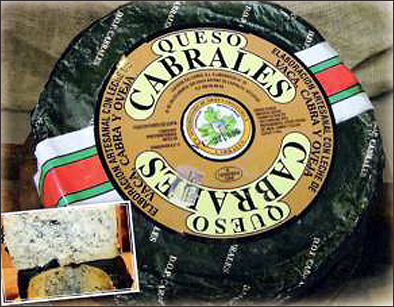Aug 13, 2007Researchers in Europe are testing whether radio frequency identification technology can be used to document the production of a Spanish cheese called Queso Cabrales. Funded by the ESTIIC, a subdivision of the European Union, and the state government of Northrhine-Westfalia (NRW) in Germany, the project is being administered by the Department of Logistics at the University of Dortmund.
Queso Cabrales is a strong, leaf-wrapped bleu cheese made from the milk of cows and goats, ripened in mountain caves. According to Jochen Schneider, a representative of the university's logistics department (also known as FLog, for Fachgebietes Logistik), the cheese is produced only in small quantities, by a few private farmers in Spain. "The cheese is made without any industrial production behind it," Schneider says, "and some ripening caves don't even have electrical power."
In addition to the researchers, the project also includes a small, local milk and food laboratory in Spain, which is responsible for the quality and safety of the cheese. "We want to document the production history of each individual cheese," Schneider explains. This can help ensure that the cheese sold to consumers is fresh, while providing an audit trail in the event of a recall or some other food-safety concern.
The project got underway in July 2006 and will run until December, using 125 kHz RFID tags that utilize the HITAG S chip from NXP Semiconductors. Each tag contains 2 kilobytes of memory, enabling it to save every production step, as well as the farmer's identification number and the cheese's composition.
A unique serial number is encoded onto the tag as an Electronic Product Code, using software developed by FLog. Schneider says 125 kHz was chosen as the frequency to prevent multiple tags from being read simultaneously. "We want to track each individual cheese," he says, "and we have to know, every time, which specific tag we are talking with." Farmers will collect data from the tags using handheld interrogators at every production step, such as when the cheese is first poured into the mold.
The tags are affixed to the Queso Cabrales at the first stage of production. This presented the biggest challenge of the project, Shneider says, because at that point, the cheese is still more liquid than solid. "Using a common label was not possible," he notes, "so we came up with the idea of using [RFID button tags about the size of a coin] with a diameter of 20 mm and a height of 2 mm."
Once the cheese has ripened and been delivered to retail stores, its RFID tag is read and then removed. "The data is read out and stored into a central database, where everyone who is interested can access it," Schneider says. "This is especially done for EU authorities, but also the customer can verify that he bought an original Cabrales cheese, and what history it has."
It's expected that the project will use several hundred button tags, and the same amount of cheese packages. "After the final pilot test," Schneider adds, "we will know if our development works in practice or still needs some optimization."


